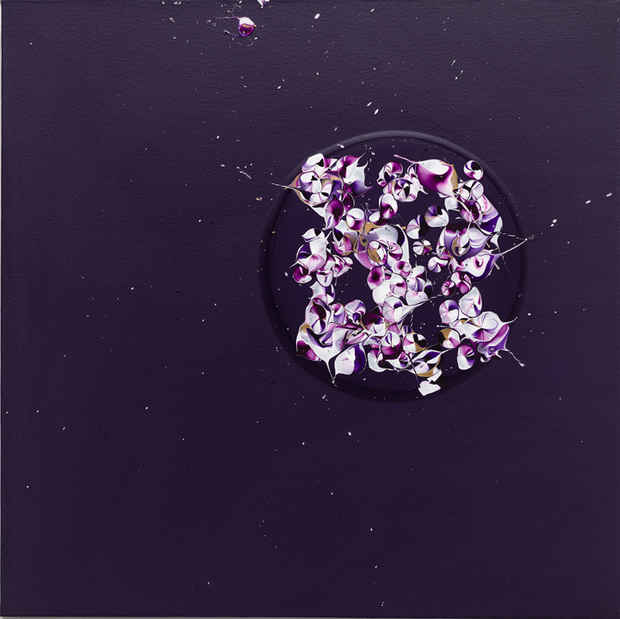Ed Cohen “I am nobody. Who are you?”
Winston Wachter Fine Art

This event has ended.
Cohen’s new body of work draws its titles from the writings of Emily Dickinson, and explores the tension between the fragility of life and Dickinson’s notion of immortality, the dialectics between rebellion and community, futility and purpose, sorrow and joy, solitude and kinship. Ultimately, Cohen’s new body of work expresses humanity’s eternal search for purpose.
In his practice, Cohen continues to draw on Zen Buddhist philosophy, which asserts that being and nothingness are inextricably linked.In paintings such as I cannot rule myself and when I try to organize my little force explodes I, II and III (2012, 2013, 2014), Cohen’s splattered acrylic ‘petals’ recall the action painters, invoking the consciousness of being; in The lassitudes of contemplation/Beget a force/They are the spirit’s still vacation (2014), the stillness of Cohen’s most perfect circles creates a meditative calm.
In the sequence of paintings With just my soul on the window pane (2014), The reverie alone will do if bees are few (2014), and If I feel physically as if the top of my head were taken off I know it is poetry (2014), colorful organic structures of paint and vines crawling and exploding on white grounds recall the energy and playfulness of Dickinson’s verse and her depictions of nature, which is a source of joy, beauty and rejuvenation but also decay, destruction and death.
Cohen’s paintings have always featured 3-dimensional foregrounds of poured or splattered acrylic on flat backgrounds; this exhibition marks his movement from the plane of the picture into the gallery space with installation and sculpture. In his work, The unknown is the largest need of the intellect (2014), Cohen places a line of painted bags of Thai rice in front of a Buddha. Rice is the most widely consumed food in the world while at the same time it is the crop most threatened by global warming. In another space of the gallery, he exhibits Water is taught by thirst (2014), an antique Japanese vessel filled with water that will evaporate over the course of the exhibition, evoking the cycle of life, the depletion of resources and mirroring his frequent motif, the circle. The series of vine paintings elegantly pair with the bags of rice and the vessel of water, affirming the fragility of nature and ultimately, human life.
The canvases Untitled I and II, each painted on a red ground, continue the theme of life and mortality, but call our attention to the love and heartache inherent in human existence. In Untitled I, a knife pierces the canvas in a gesture of passion and violence. In Untitled II, we see only a euphoric explosion of paint, an act of jouissance (the title of one of Cohen’s text paintings). Dickinson said “parting is all we know of heaven and all we need of hell,” in testimony to the human pleasure of communion with others and the consequent agony of loss. Theheart Cohen bares in this cycle is deeply personal - what Dickinson describes as the “ourself behind ourself concealed”.
The expanded scale of Cohen’s new paintings creates a more powerful, confrontational, one-to-one dialogue with the viewer than ever before. The level of detail in the splatter paintings invites the viewer to lose herself in a fractured color space. A magnifying glass has been made available for a more intimate viewing experience with the canvas. At a human scale, the pools of paint engulf the viewer in a kveil of void. Even in his circular voids, the audience is invited to an introspective reflection and finds presence in absence. For Cohen, each experience of a work should be a unique encounter.
Media
Schedule
from December 11, 2014 to January 17, 2015
Opening Reception on 2014-12-11 from 18:00 to 20:00